A new car for first time drivers should be cheap, easy to drive and safe. Here are the 10 best first cars
Buying your first car is one of the most memorable milestones on the passage into adulthood. Once you’ve passed your driving test, the next hurdle between you and a whole new level of freedom will be finding the best first car for your budget, so we’re here to help.
The cost of buying and running a car can be prohibitive, so the best way to maximise how far your money goes is to get a car that’s affordable, economical and with cheap insurance. While many first time car buyers will focus on used cars, buying or financing a brand new car means you’ll get a manufacturer warranty, while also reducing the chances of mechanical problems in the first place.
Top 10 best small cars to buy 2022
Here we’ve listed 10 of the best new cars for new drivers. They are small enough to be manageable and easy to drive, but offer some luxuries to keep new drivers safe and connected, too. They’re also good to drive, which will help new drivers to build confidence with every mile.
Top 10 best first cars for new drivers 2022
- Volkswagen up!
- Kia Picanto
- Ford Fiesta
- SEAT Ibiza
- Hyundai i10
- Volkswagen Polo
- Toyota Aygo/Peugeot 108/Citroen C1
- Skoda Fabia
- Dacia Sandero
- Vauxhall Corsa
Volkswagen up!
We think that Volkswagen up! Is such a good small car that we awarded it the title of our City Car of the Year four years in a row.
The key to the up!’s appeal is the low price, plus all trims sit in insurance group 10 or lower, with the exception of the hot GTI model. The only engine offered in the standard petrol models is a 1.0-litre three-cylinder which produces 64bhp and should return more than 50 mpg.
Despite being so cheap to buy and run, the up! doesn’t skimp on safety. All brand new models get Electronic Stability Control, multiple airbags, and a multi-function front facing camera. Interior quality also defies the budget price, with brand new models coming with air-conditioning and a DAB radio with Bluetooth connectivity as standard.
The up!’s small dimensions make it easy to drive and park, and actually rather fun, too, and while the engine is only a small unit, it doesn’t feel too strained when making the occasional motorway trip. There’s even the option of the fully electric VW e-up! if you’d prefer a zero-emission car. It offers up to 159 miles of battery range and the same level of quality as the petrol car, but does command a higher price as a result.
KIA Picanto
Now in its third generation, the Kia Picanto, has developed into a rather youthful and sporty-looking little car. But while the latest looks give the Picanto more of the fun factor, it actually remains a very sensible city car choice.
Inside, there is a healthy amount of equipment available across the range. Expect to find electric front windows, USB inputs, auto lights and hill start assist. Additional soundproofing and tweaked engine mounts and a new engine cover also make the Picanto much more refined than its predecessors.
Ownership costs should be minimal, with fuel consumption that can top 50mpg, and all Picanto trims find themselves in low insurance groups. Kia’s signature seven-year/100,000 mile warranty should keep maintenance worries at ease, too.
Ford Fiesta
A firm favourite of many UK buyers, the Ford Fiesta is one of the most common superminis on the road, and it isn’t hard to figure out why; it’s reasonably priced, refined, practical, and even fun to drive.
There are multiple versions on sale, but opting for one of the lower-specced cars will probably be the best option for a new driver as this will not only keep costs down but should still provide all the features you should realistically need. Even in base ‘Trend’ trim, the Fiesta comes with LED headlights, air-conditioning, an eight-inch touchscreen media system with Apple CarPlay and Android Auto, lane-keeping assist, and cruise control.
SEAT Ibiza
The SEAT Ibiza takes the proven, high-quality underpinnings of the Volkswagen Polo but delivers them in an arguably more stylish body, along with a lower price.
The Ibiza is one of the best-equipped cars on this list when it comes to safety, too, with even the base SE spec offering electronic stability control, front collision warning, autonomous emergency braking, hill-hold assist, a tiredness recognition system, and lane-keeping assist.
There are plenty of comforts to accompany this safety, too, as an 8.25-inch touchscreen media system with Android Auto and Apple CarPlay, air-conditioning, and cruise control also feature as standard.
Hyundai i10
Hyundai has taken a slightly bolder approach to the latest i10’s styling, and while it still isn’t the prettiest car out there, it does look much sharper than before.
The i10 has received a number of upgrades on the inside, too, with a full array of safety kit fitted as standard across the range. However, if you want features such as a rear-view camera, climate control or even front foglights, you will need to opt for the Premium or N-Line trims, both of which command a higher price.
Insurance should prove pretty affordable across the i10 range, with the different variants ranging between insurance groups 3-10. No matter which i10 you choose, though, you will get the brand’s five-year/unlimited-mileage warranty as standard.
Volkswagen Polo
If you like the sound of the SEAT Ibiza mentioned above but fancy a bit more of a ‘grown-up’ look, the Volkswagen Polo is very hard to beat.
There are a few versions of Polo to choose from, but the base ‘Life’ trim offers plenty of features, including alloy wheels, automatic headlights, a DAB radio, electronic stability control, and rain-sensing automatic wipers.
While the Polo is notably larger than the VW up!, it should still prove easy to drive and park. That said, there is the option of the Driver Assistance Package, which includes parking assist.
Toyota Aygo/Citroen C1/Peugeot 108
The Toyota Aygo, Citroen C1, and Peugeot 108 are the cheapest cars that you can buy from their respective brands, but still provide plenty of the comforts that the pricier cars do, such as air-conditioning, touchscreen media systems, and driver-assistance systems.
The cars are identical when it comes to mechanicals, but each has a slightly different appearance, so which one you choose will probably boil down to personal preference and any deals that you may find. What remains the same across the three, though, are five doors for easy access, an economical three-cylinder petrol engine, and a plethora of customisation options.
Skoda Fabia
Another sibling to the SEAT Ibiza and Volkswagen Polo mentioned above, the Skoda Fabia is not only another car that offers plenty of practicality, equipment and low running costs, but it’s also the cheapest of the three to buy.
Opt for the base ‘S’ trim and you will get air-conditioning, lane-keeping assist, autonomous emergency braking, and a DAB radio with USB-C and Bluetooth connectivity for little more than £15,000.
Dacia Sandero
The Dacia Sandero is one of the cheapest cars on sale in the UK, and while the previous model kept down costs by being based on a far older Renault, the latest Sandero is based on the current Clio, which itself is a great supermini.
Admittedly, equipment on the Sandero is rather more basic and sparse than in the other cars on this list, but the essentials are all still there. With pricing starting from little more than £10,000 though, you won’t feel like you’re being short-changed. The latest Sandero should also prove rather practical for everyday use with five seats, five doors and 320-litre boot. While it won’t give any major thrills from behind the wheel, it is perfectly straightforward and easy to control.
One downside to the Sandero, however, is that it only managed to achieve a two-star Euro NCAP safety rating, but all Sanderos come with six airbags, an autonomous emergency braking system, Hill Start Assist and electronic stability control.
Vauxhall Corsa
The Corsa was recently announced as 2021’s top-selling car in the UK, and it’s not surprising to see why, because it is hugely popular among many buyers from all different walks of life, including new drivers.
Low running costs, a generous amount of up-to-date technology, and a rather sporty appearance all make the Corsa an appealing option in this fiercely fought part of the market.
You also have the choice of a 1.2-litre petrol or a 1.5-diesel engine. We’d recommend opting for the petrol unless you are planning to make a large number of long-distance and motorway journeys. This engine should still return more than 45mpg.
Like the VW up!, the Corsa also has a fully electric option, the Corsa-e. This offers brisk performance and a range of more than 200 miles, albeit at a higher price than the petrol models.
What to look for in a first car
One of the biggest obstacles to driving is sky-high insurance costs. As a new driver, your shortage of experience will count against you in the eyes of an insurer. If you can keep out of trouble for 12 months, you will accrue a no-claims discount which will give you a percentage reduction on your premium. If you continue to not make any insurance claims, then this discount will only grow over the years. There are even some finance deals which include free insurance, although this usually raises the monthly payments drastically.
One way of boosting a no-claims discount is to fit your car with an insurer-approved ‘black box’. This electronic device plugs into your car’s electronics and monitors your driving, and you and your insurer can review your performance to see how and where you can improve your driving. Return a good score, and the insurer can further reduce your payments for cover.
Cheapest cars to insure in the UK 2022
Some parents will be in a position to buy their children their first car, and if you’re in that enviable situation, then you’ll likely want to buy the safest car possible. You need to find the small cars that come with the highest rating by independent assessment organisation Euro NCAP: the higher the score for a car, the safer it is.
Still, buying a new car rather than an old second-hand one will mean it’s inherently safer, because it will feature the most up-to-date safety equipment. This could include more advanced systems such as autonomous emergency braking and lane-keeping assist, which allow the car’s systems to intervene in an emergency and try to avoid a collision.
We’d recommend going for a petrol car over a diesel. There aren’t many small diesel cars on sale anyway, and you’ll only reap the benefit of their better fuel consumption if you do lots of motorway miles, which is unlikely if you’re an inexperienced driver. It’s better to go for a small petrol, and if the option of stop-start is available then that should help to reduce running costs even more. While the experience of the engine cutting out when you put the car in neutral might be unnerving at first, you’ll soon get into the habit of saving fuel and making your money go further.
Alternatively, if your budget allows, an increasing number of smaller hybrid models is also available. These cars use both a petrol engine and electric motors to lower fuel consumption and emissions, meaning that you could make savings on both running costs and tax, all while reducing your carbon footprint. If you are looking at a hybrid car, it is important to remember that there are different types of hybrid, and these carry their own advantages and disadvantages depending on how you use them.
Best small electric cars 2022
If you’d prefer to go all-electric, there are some small, easy-to-drive models to choose from. However, prices for electric cars are still higher than their petrol, diesel and hybrid counterparts in the majority of cases, so insurance premiums could also be a lot higher as a result. Calculate it correctly, though, and the fuel and tax savings could help to counteract this. It is, of course, important to make sure that you would indeed be able to live with an electric car, such as having the space for a home-charger.
Other highlights to look out for when buying a car for a new driver include light steering, good visibility, a responsive engine and brakes, user-friendly controls and a positive gear shift; all of these will help a new driver build confidence during their time behind the wheel.
Everything you need to know about learning to drive, getting your driving licence and choosing your first car…
Learning to drive
- How to get your driving licence
- What is the highway code?
- Best intensive driving courses
Passing your driving test
- Driving theory test: everything you need to know
- Hazard perception test: what to expect and how to pass
- Driving test ‘show me, tell me’ questions: hints and tips
- Practical driving test: how to pass
- Driving test pass rates explained
- Driving test aids product test
- History of the UK driving test
Getting your first car
- Best first cars for young drivers
- Cheapest cars to insure
- Cheaper car insurance for young drivers: our top tips
Source: Read Full Article

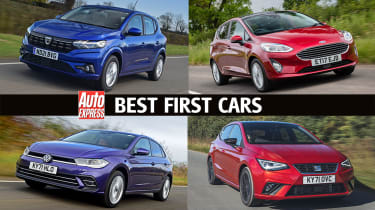
 Top 10 best small cars to buy 2022
Top 10 best small cars to buy 2022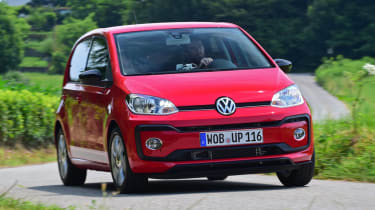
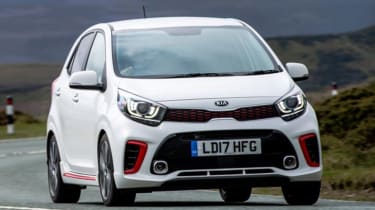
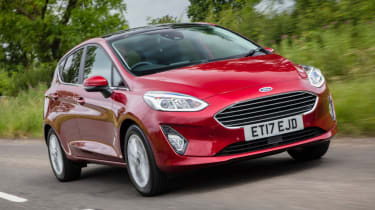
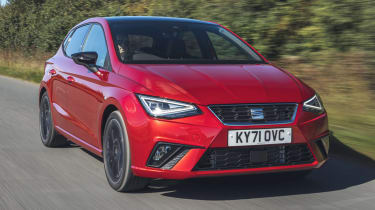
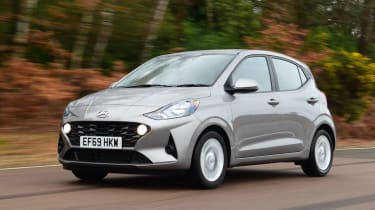
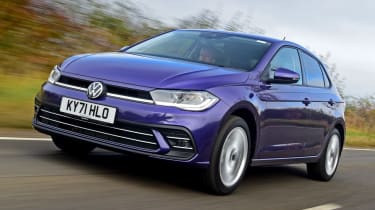
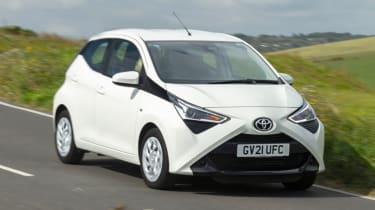
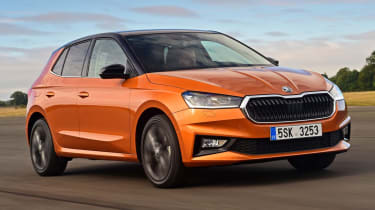
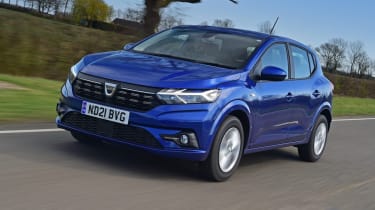
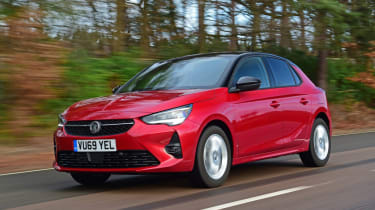
 Cheapest cars to insure in the UK 2022
Cheapest cars to insure in the UK 2022 Best small electric cars 2022
Best small electric cars 2022